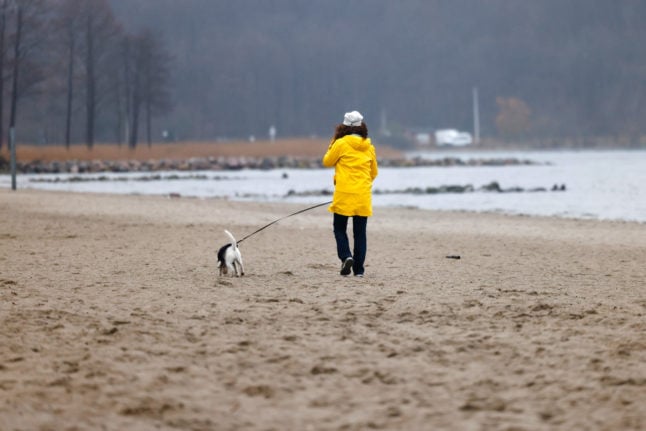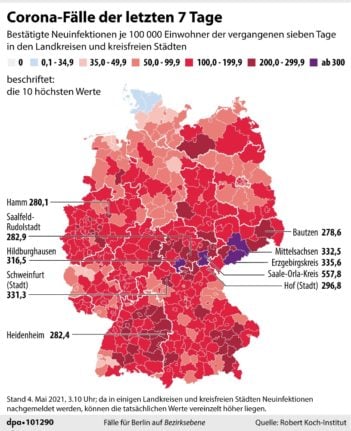“The third wave appears to have broken,” Spahn told a press conference in Berlin.
READ ALSO: IN DETAIL: These are Germany’s planned freedoms for Covid-vaccinated people
“The infection figures are dropping again, but we are still at a high level. They are not yet falling everywhere at the same rate, but they are falling,” he said.
Germany’s Robert Koch Institute health agency recorded 18,485 new infections in the past 24 hours on Friday — compared with 27,543 on the same day two weeks ago.
The number of new infections per 100,000 people over the past seven days stood at 125.7.
Under national virus measures introduced in April, areas with incidence rates below 100 are allowed to begin easing some restrictions.
But Spahn warned that easing curbs too much too soon “would only help the virus”.
“In this phase of the pandemic, it is really a matter of not gambling away what has been achieved,” he said.
The so-called emergency brake rules prescribe strict curbs in areas with rates above 100, including sweeping shutdowns, contact restrictions and overnight curfews.
But the Bundesrat upper house of parliament on Friday approved new legislation to lift some curbs for fully vaccinated people and those who have recovered from Covid-19.
Justice Minister Christine Lambrecht called the move “a very important step towards more normality”.
‘Urgent need’
From Sunday, they would no longer have to abide by curfews or limits on social contacts.
Berlin’s mayor Michael Müller admitted that it was going to be “damn difficult to check” the curbs are lifted only to those who fall under these categories.
But he argued that “this is about fundamental rights, and they can only be restricted when there is an urgent need to do so”.
After a slow start, Germany began accelerating its vaccination campaign in April and last week gave the jab to more than one million people in one day.
Some 31.5 percent of the population have received at least one injection by Friday.
Spahn said Thursday that Germany will aim to offer Covid-19 vaccines to all children aged 12 and over by the end of August once a jab is approved for younger people by the European regulator.
It has also opened up the AstraZeneca vaccine to anyone who wants it.
The AstraZeneca jab had previously been recommended only for people aged 60 and older following concerns over blood clotting cases among younger recipients of the vaccine.
READ ALSO: Germany gives green light to offer AstraZeneca to all adults




 Please whitelist us to continue reading.
Please whitelist us to continue reading.
Member comments